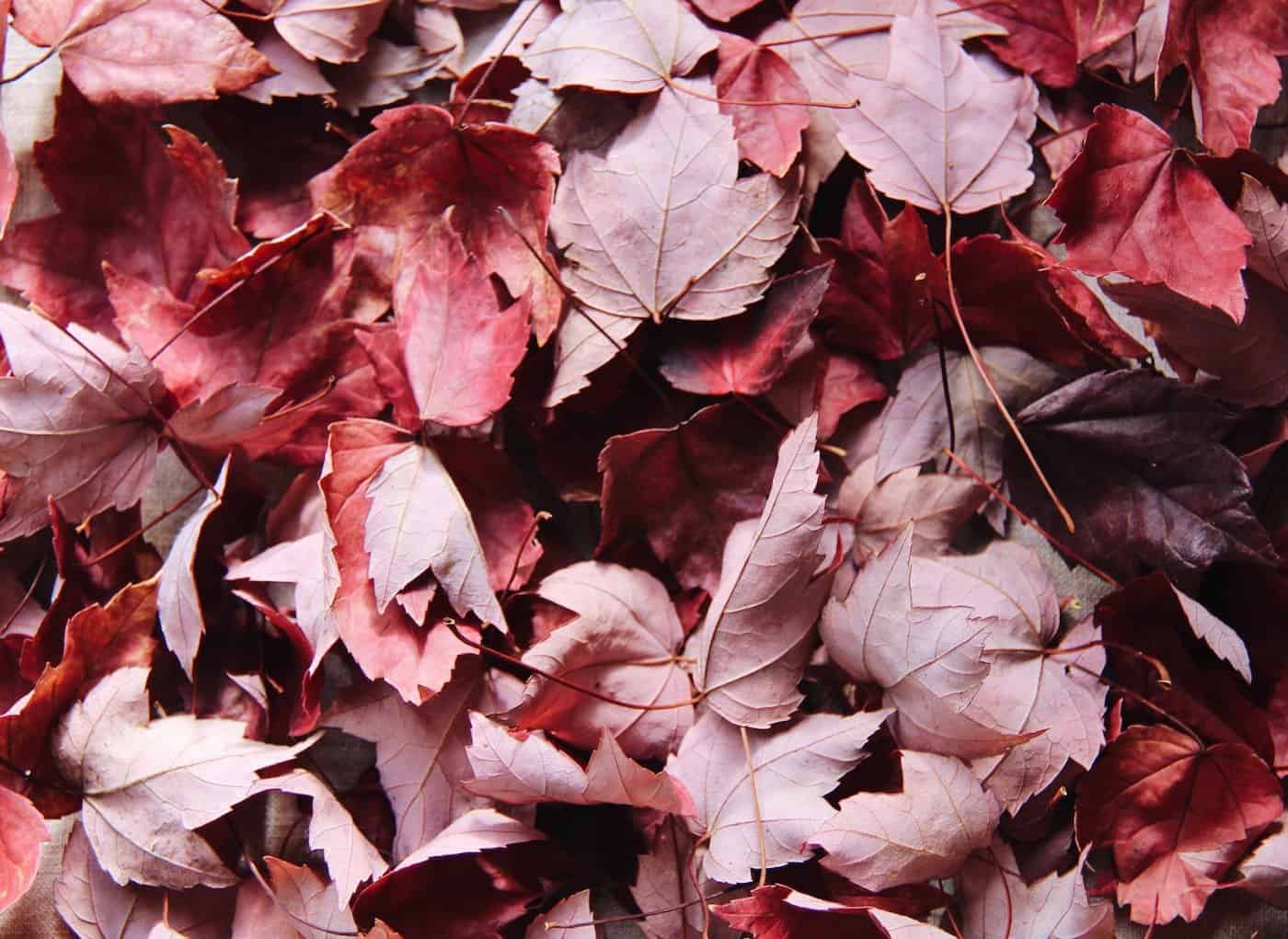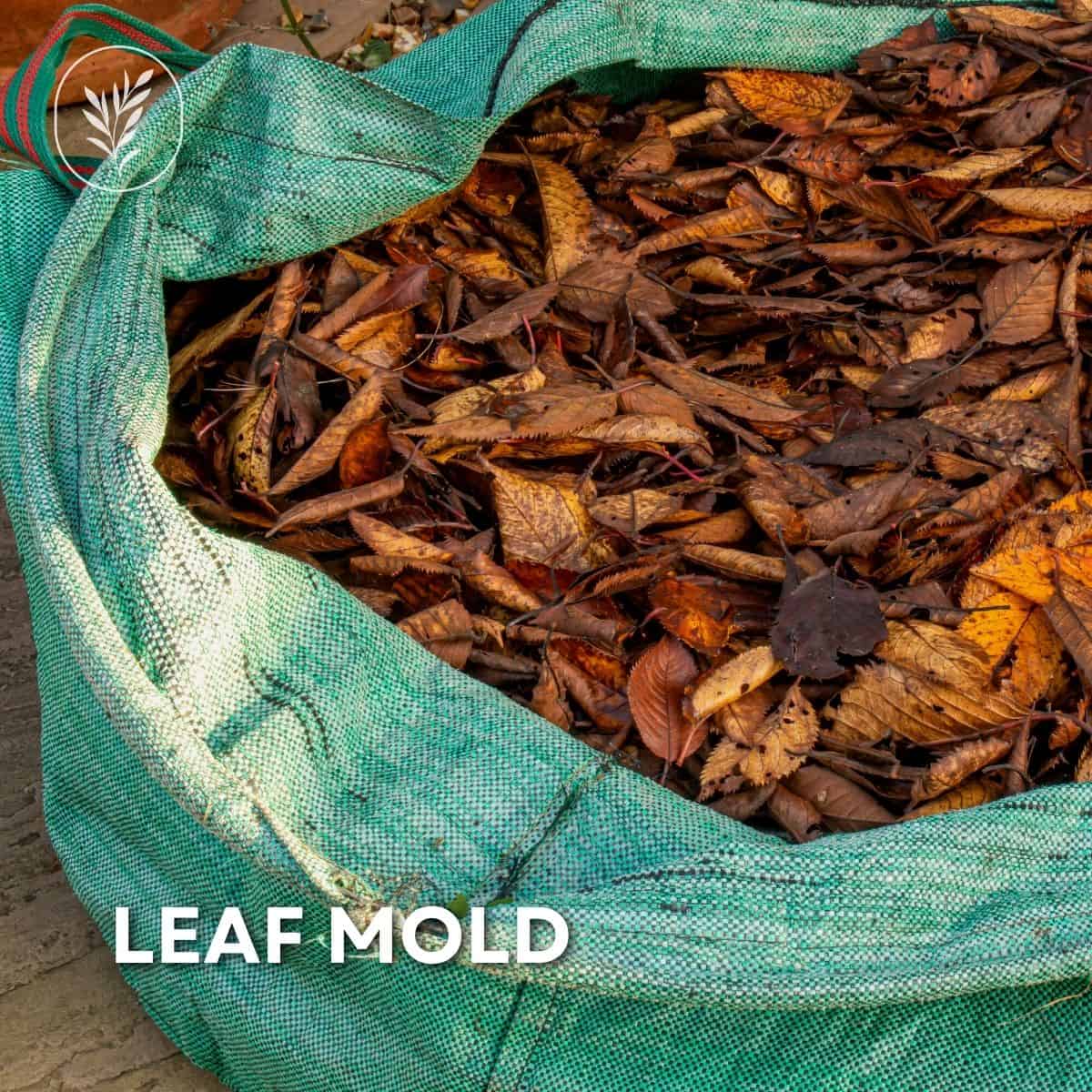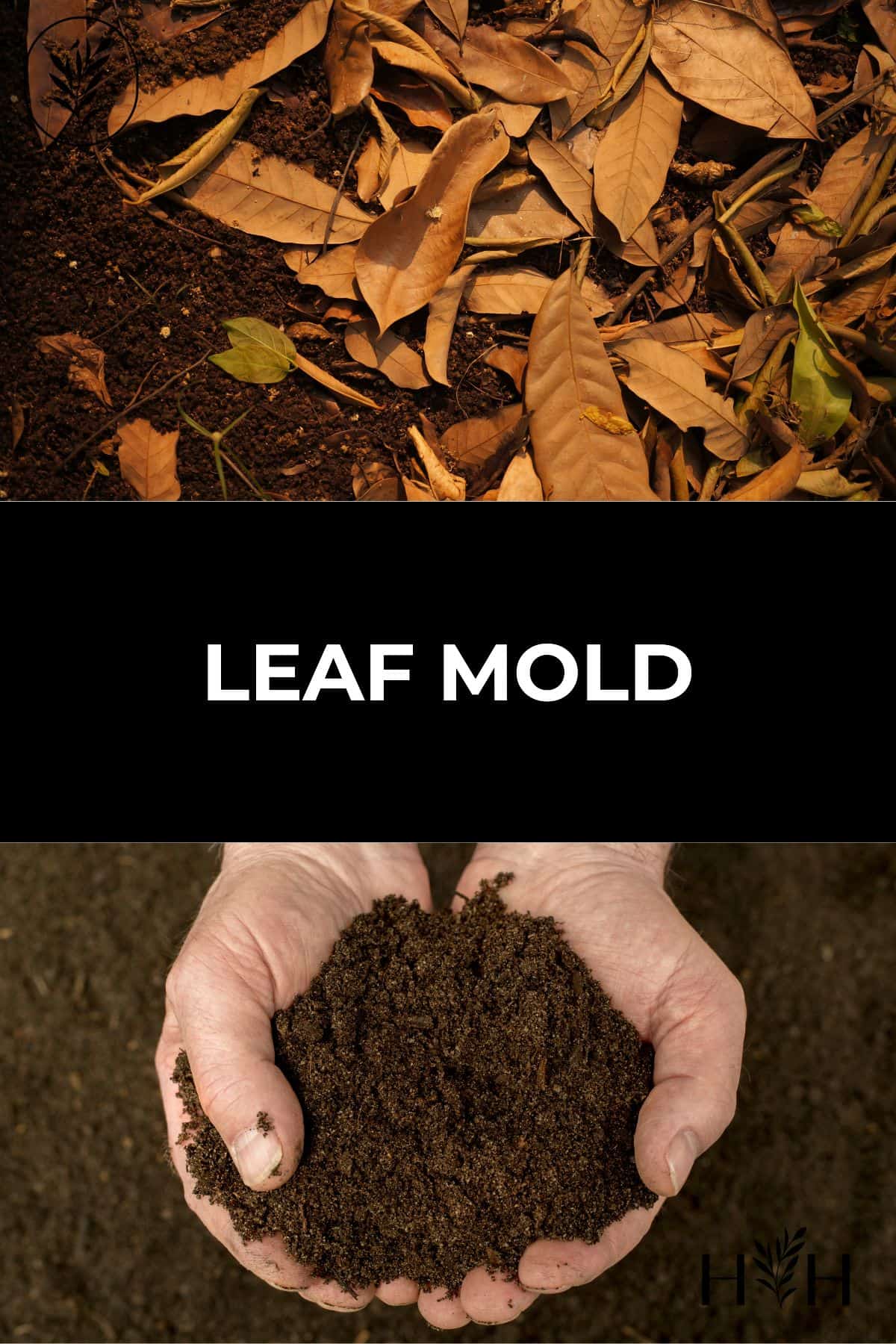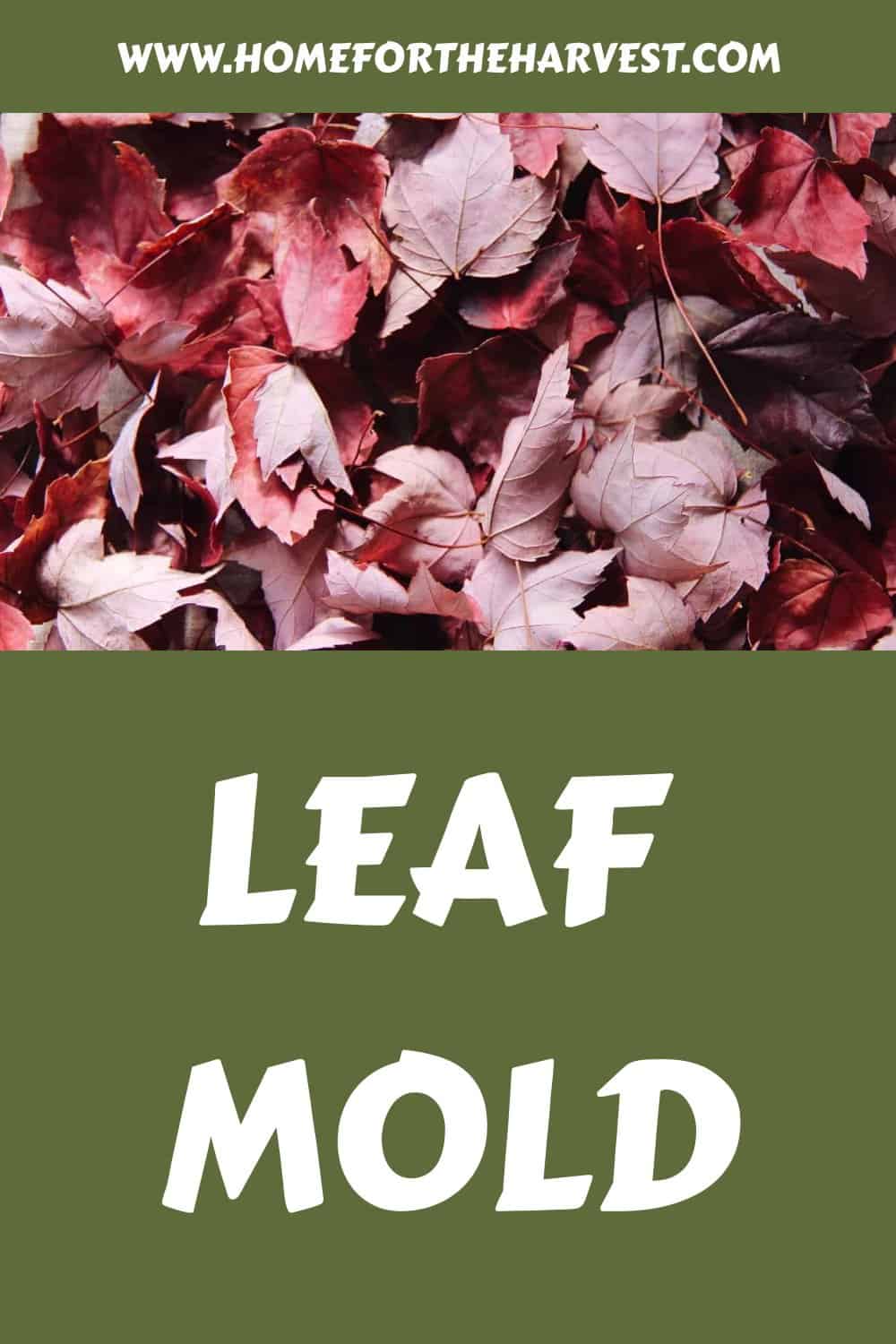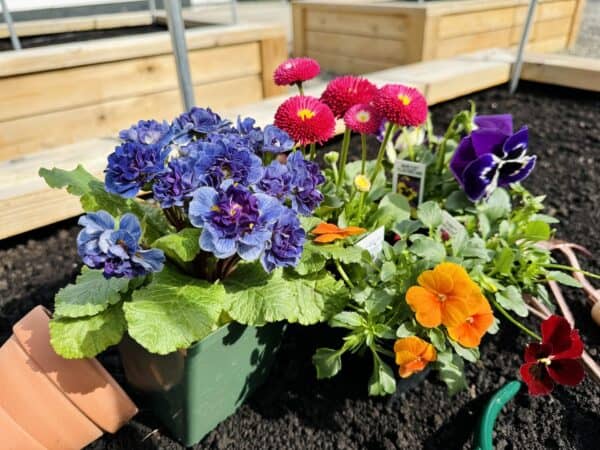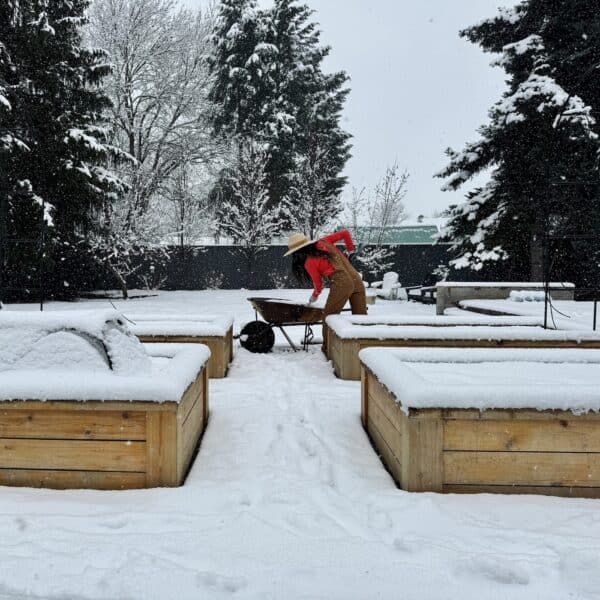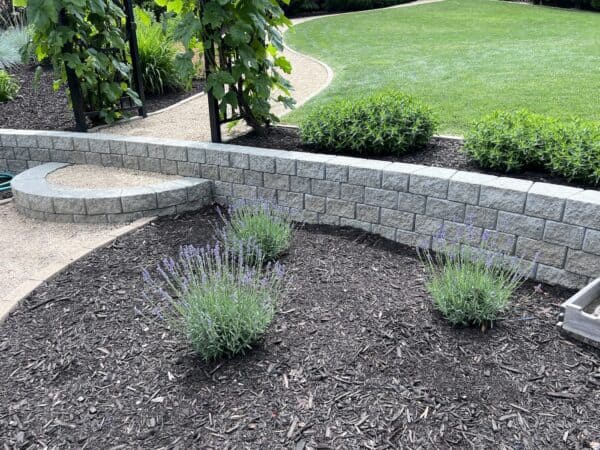It’s leaf mold season! Autumn leaves are the quintessential sign of fall. Lucky for us, they’re not only pretty…but also useful. Composting leaves is an easy way to transform them into DIY natural plant food. This tutorial explains exactly how to make leaf compost from your fallen leaves into nutrient-dense fertilizer for your garden. Leaf mold!
Leaves are an incredible example of the nutrient cycle that occurs in the backyard. Trees fill their leaves all summer with nutrients from deep within the ground. Then these fallen leaves decompose to provide natural fertilizer for plants as well as mulch when left on the ground.
Save your leaf piles
I get so sad when I see the bags of leaves on the corner, ready to be carted away. Don’t these people understand they are sending beautiful organic matter off of their land!? Are they crazy? We only get leaves once a year…they should be saved and treasured, not trucked to our landfills to take up space.
You may be tempted to ask your neighbors for their bagged leaves once you get as excited about composting leaves as I do. Restrain yourself unless you can be sure the trees haven’t been sprayed with pesticides. Your own leaves, which you know haven’t been sprayed, are the safest leaves for leaf mold.
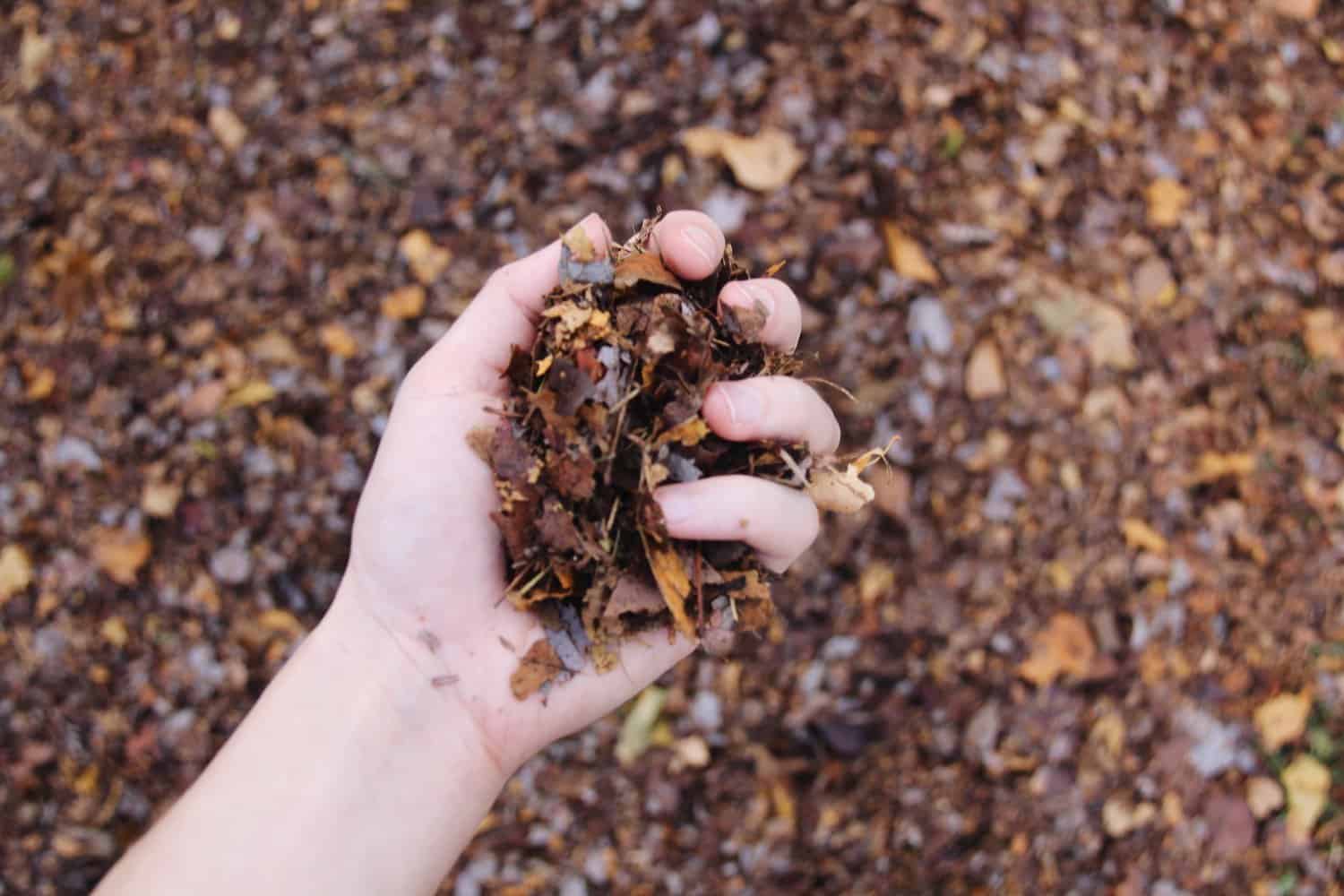
Making leaf mold compost with fall leaves
In the wilder areas of our yard, I let the leaves stay on the ground as mulch. These areas were previously covered in bark mulch, so composting leaves aren’t going to harm anything (like grass). The leaf mulch keeps the weeds down and retains nutrients for the trees.
On our lawn, however, leaves must be raked up. If they don’t get raked up, they’ll make a nice mat when the rain comes and smother the grass below. This is one of the processes that trees use to out-compete grass! Don’t let the fallen leaves kill your lawn if you don’t want them to. If you’re tired of your lawn, by all means, let the trees outcompete it.
We compost the leaves that land on the grass to create nutrient-dense plant food (leaf mold) for the garden. First, we mow over the leaves with a mulching lawnmower. Shredding the leaves speeds up the decomposition process. It is much easier to shred them in place than in a pile (we know this from experience….). Once the leaves have been adequately shredded, we rake them up into piles. A wheelbarrow is perfect for transporting shredded leaves to the compost bin.
Outside in the crisp fall air, raking leaves is a wonderful way to work out. I would take raking leaves over going for a run on the treadmill any day.
Making leaf mold compost in compost bins
My dream compost bin arrangement for composting leaves is a three bin-system: one for building, one for turning, and one for finished compost. The first bin receives new organic matter, like the shredded leaves. After the compost pile in the first bin heats up, it is transferred into the second bin. The transfer process mixes up the pile, turning the compost and helping decomposition. The compost is finally transferred to the third bin, which is used to store finished compost for immediate use.
This isn’t the fastest way of composting, but it’s the most practical for our household. I don’t have time to be out there measuring the temperature, investigating the moisture content, and turning the pile all the time just so that my compost can be done in a couple of months. But…I do like to have lots of compost! And I’m willing to wait for it.
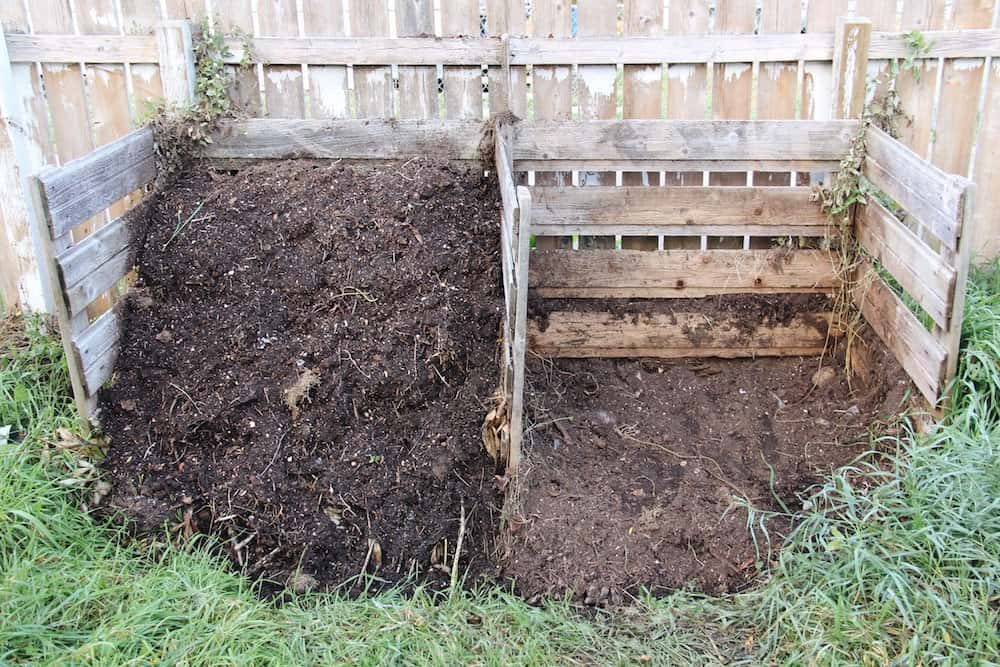
We have only a two-bin compost system, so we don’t have a storage bin (the third bin). We just place finished compost around the yard as soon as it’s done.
The perfect organic leaf mold requires leaves and… sometimes…
So do leaves alone make perfect organic compost? Not quite. Compost requires four things: carbon-rich material, nitrogen-rich material, water, and air. Carbon-rich materials like shredded paper or fallen leaves are generally dry and brittle. This portion gives the pile bulk. Nitrogen-rich materials, like coffee grounds or grass clippings, are usually moist. Nitrogen kick-starts decomposition.
Since dead leaves are full of carbon, they can use a bit of a nitrogen kick to get the decomposition going. Coffee grounds are a particularly good nitrogen resource. Save your coffee grounds up or collect them from coffee shops (Starbucks bags them and gives them out!).
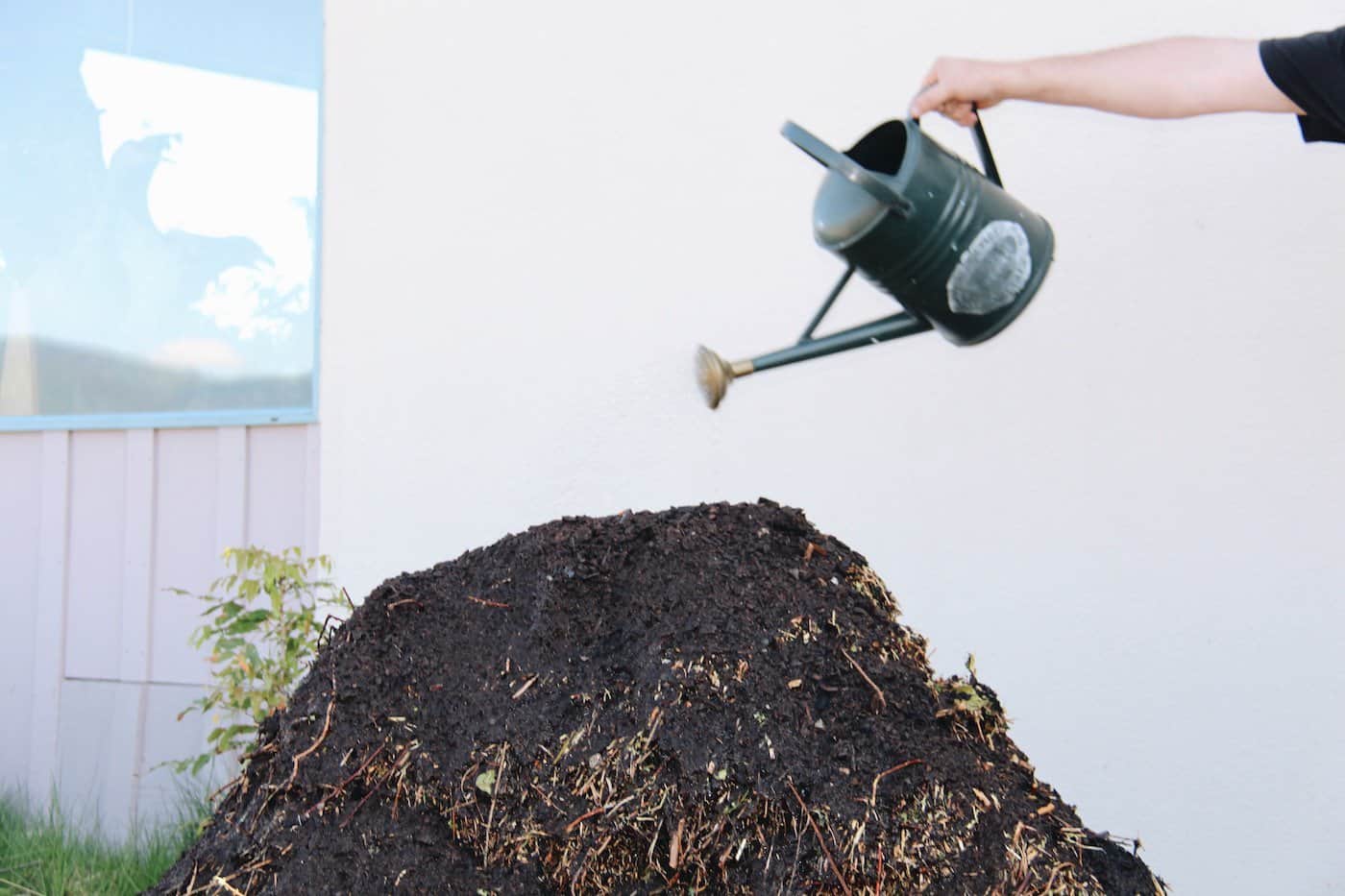
Carbon to nitrogen ratio for composted leaves
An efficient method of composting leaves is to create a pile with a C:N ratio (carbon to nitrogen) of about 30 parts carbon to 1 part nitrogen by weight. According to this small-scale composting guide from the Cornell Waste Management Institute, leaves have a C:N ratio of anywhere to 30-80:1. Nitrogen-rich coffee grounds have a C:N ratio of 20:1 (note that while coffee grounds contain more nitrogen than leaves do, grounds still do contain 20x more carbon than nitrogen). Grass clippings have a C:N ratio of 12-25:1.
It can be hard to create the perfect compost pile in your yard right off the bat because of the variation in C:N ratio between various source ingredients. Some trees have leaves with more carbon than others. Some leaves are mulched along with grass clippings while others are raked up without any nitrogen-rich grass. Some grass clippings are dry and not all that nitrogen-rich! Just try to approximate as best you can and adjust your recipe as you go to suit your unique ingredients.
If you’re getting worried about the ratio, remember that leaves decompose in nature without any human effort. Most leaf mold is made with just leaves.
Without added nitrogen, composting leaves are slow to decompose. Too much nitrogen, however, will cause the compost to become slimy and smell bad. Because it can be difficult to create a pile with an exact ratio of 30:1 carbon to nitrogen, I generally err on the side of excess carbon because I’d prefer the pile to take a bit longer than to have a slimy, smelly mess in my yard. Experiment with your ingredients, and you’ll learn what works best for you in your environment.
“Never ever throw out leaves unless they are seriously diseased. Collect them from other people. Use them in the composter, rake them up on top of borders where they will be broken down by worms.”
Thrifty Gardening: From the Ground Up, by Marjorie Harris

Supplies for making leaf mold
- Fall Leaves (lots of different types of deciduous leaves are perfect)
- Compost Bin or Designated Heap Area
- Mulching Lawnmower
- Rake
- Wheelbarrow
- Coffee Grounds (or other nitrogen-rich organic material such as grass clippings or manure)
- Hose or Watering Can
How to turn leaves into finished leaf mold
- Watch to see when the leaves fall to the ground. Using freshly fallen leaves ensures most of their nutrients are still locked up inside them. Dry leaves will help the pile retain air voids (wet mats of leaves will decrease the air in the pile). While you’re enjoying the fall colors and waiting for the leaves to fall, consider which nitrogen source you’ll mix with your leaves.
- Run the mulching lawnmower over the freshly fallen leaves. Take several passes over the leaves if you can so they are finely shredded. Don’t worry if you’re mixing in grass clippings as you go – that’s a good thing! The grass clippings will add a source of nitrogen to your compost pile.
- Rake the leaves up into piles.
- Use the wheelbarrow to transport the first load of leaves to the compost bin or designated patch of land.
- Place a load of leaves into the open compost bin or onto the designated spot. The layer of leaves should be about 10 cm thick (4″).
- Place a layer of coffee grounds or other nitrogen-rich material on top of the leaves. Keep the 30:1 ratio in mind and adjust for any other nitrogen sources like grass clippings that might be mixed in with the leaves (remember that the C:N ratio is by weight).
- Use the hose or watering can to moisten the pile. If you have access to natural outdoor soil or some old compost, sprinkle a bit on. The mineral grains and biological life in natural soil and compost will give your compost a boost.
- Repeat steps 4-7 for each subsequent load of leaves. This process should lead to a layered, moist, compost pile. Ensure you are adding coffee grounds (or other nitrogen sources) each time you bring new leaves to maintain the C:N ratio, and don’t forget to moisten the pile! Your finished heap should be about 5′ wide and 3′ high.
- Turn the pile after two weeks, or once the bin fills up. Note that if you turn it in frequently, it will be done sooner!
You can eventually get fancy with compost if that’s your jam, measuring the temperature, perfecting the moisture content, and calculating your amounts of ingredients….but for now, just get started! Adjust as you go and enjoy using your finished compost in your garden.
Leaf mold piles in full sun will decompose faster than piles in the shade. The composting process will speed up in hot weather and slow down in the winter. Well-shredded leaves will compost faster than large leaves. Change things up and take notice of how the pile behaves.
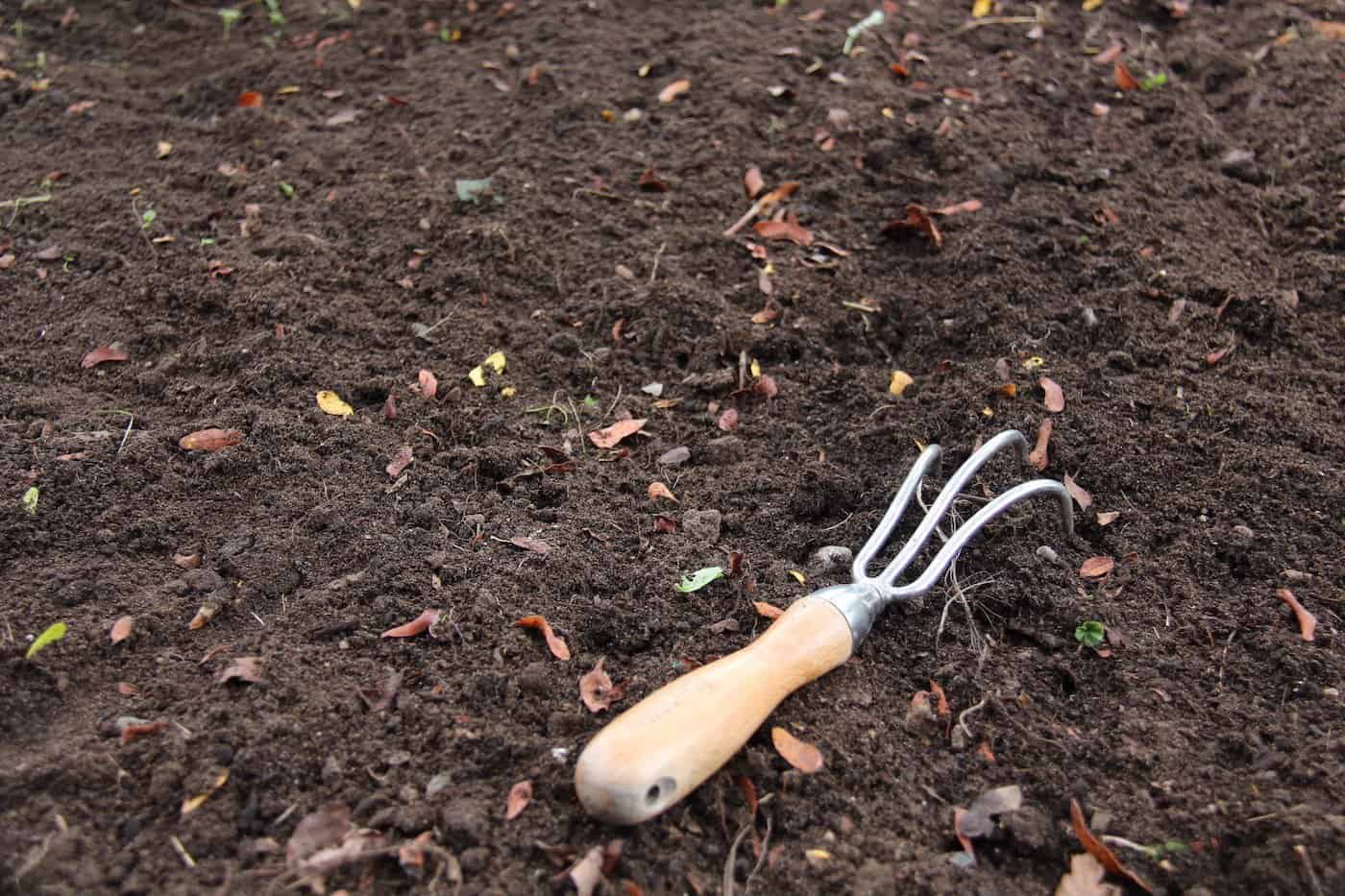
How to use your leaf mold compost
I place a layer of leaf mold compost (1″-2″) over my garden in the fall to feed next year’s crop and also to smother weeds. Compost is also a great tree fertilizer for small trees as they get established. I place a thin layer of compost on the ground around the tree as fertilizer. Be sure to avoid touching the bark with the compost (moisture against bark invites disease). Sometimes I top the layer of compost with a layer of fresh shredded leaves for added winter protection.
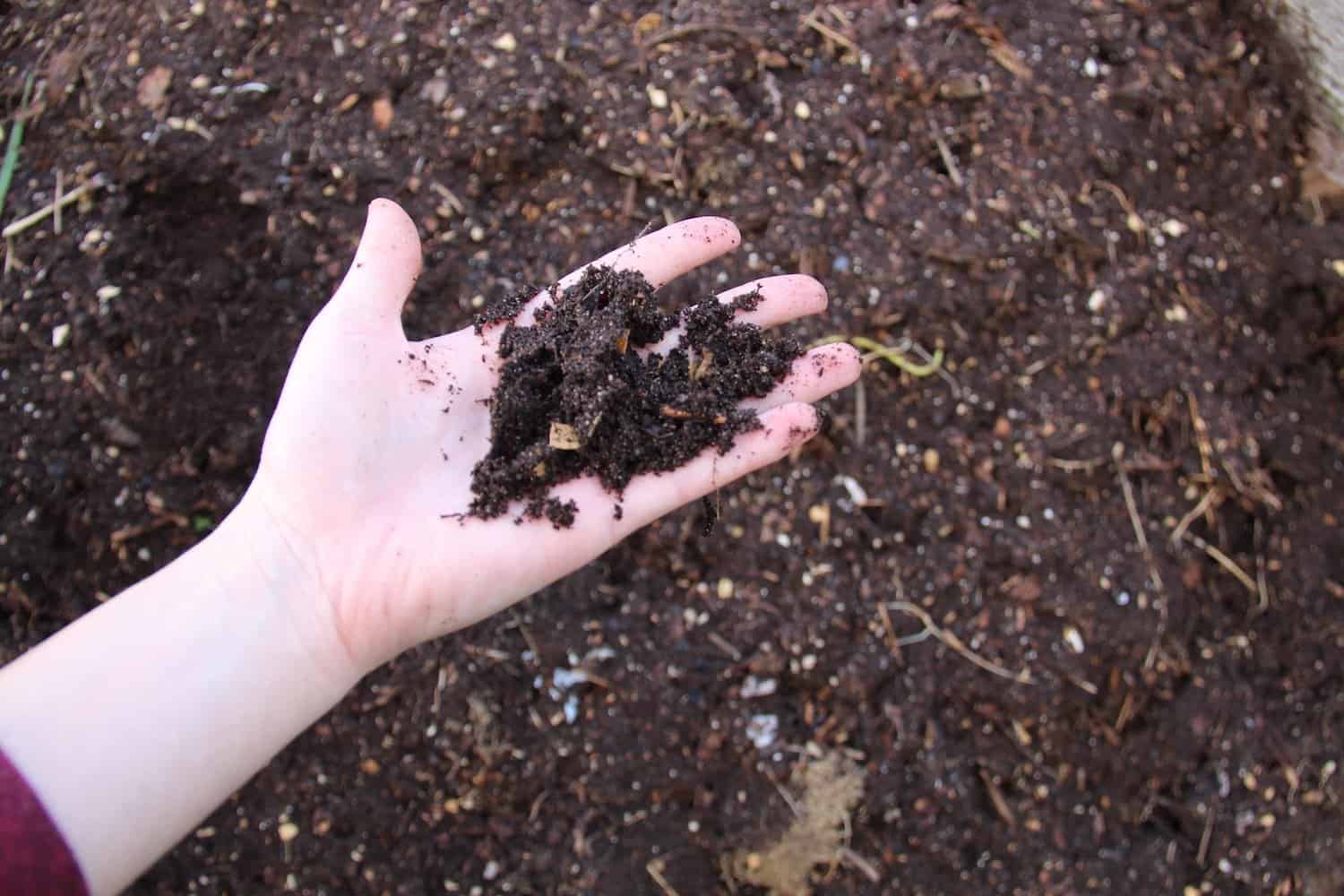
Composting autumn leaves into leaf mold
Composting leaves is a sustainable way to recycle leaves into wonderful leaf mold plant food. Recycling the leaves in your own backyard reduces the transport footprint that results from trucking the leaves off your property. Composting leaves also reduces the overall space required in landfills. Lastly, leaf mold compost makes perfect organic plant food!
Leaf mold is an essential nutrient for your garden. Leaf mold helps retain moisture and improve the health of the soil, as well as providing increased microbial life, improved drainage, aeration, and pH balance. Additionally, leaf mold can be added to your garden to help create a healthier environment.
By having a leaf mold pile in your garden, you can ensure that your plants have access to the nutrients they need. It’s no wonder that leaf mold has been used in gardens around the world for centuries! Leaf mold is great at aiding plant growth and can provide other benefits, such as reducing erosion, helping with water retention, and even weed control. With so many advantages to adding leaf mold to your garden, it’s easy to see why so many people choose it.
Leaf mold is a total win-win!


